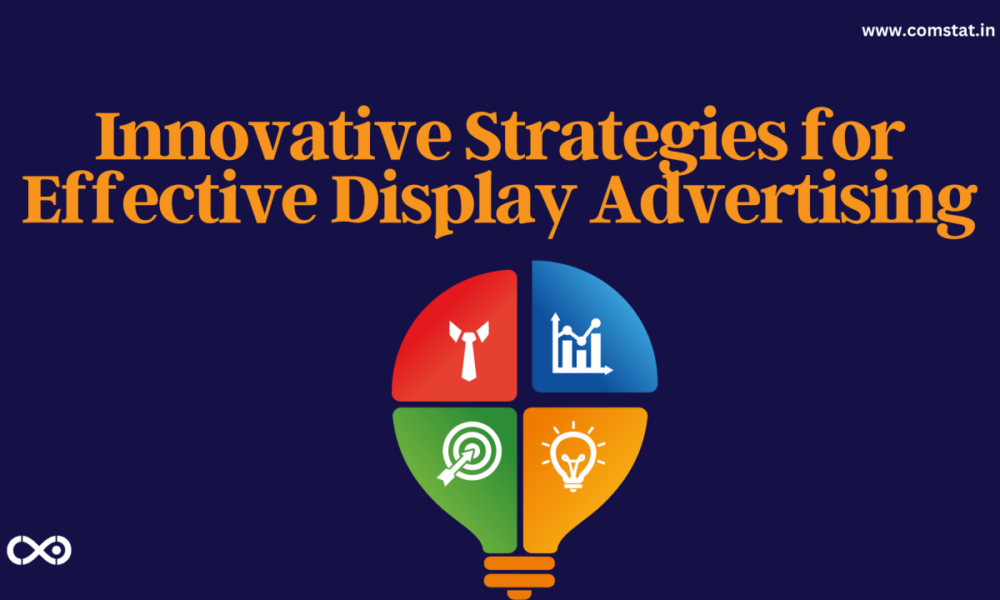In today’s digital landscape, where the average consumer is bombarded with countless advertisements daily, creative design has become more crucial than ever for capturing attention and driving engagement. Display ads, with their unique ability to visually communicate a brand’s message, rely heavily on the principles of effective design to stand out amidst a crowded space. From vibrant imagery to strategic layouts, the aesthetic and functional elements of an ad play a pivotal role in its success. This article explores how creative design influences ad performance, providing insights into crafting visually compelling and impactful ads that resonate with audiences.
A well-designed display ad not only grabs the viewer’s attention but also ensures that the message is conveyed clearly and effectively. The interplay between visuals and text can significantly impact how an ad is perceived and interacted with. Understanding the nuances of design, from color choices to layout structures, can make a substantial difference in how an ad performs. By focusing on these design elements, advertisers can enhance their chances of standing out and achieving their marketing goals.
Moreover, effective ad design is not just about aesthetics; it involves a strategic approach to layout, branding consistency, and compelling messaging. By adhering to best practices and utilizing techniques such as A/B testing, advertisers can refine their ads and improve performance over time.
This article will delve into how creative design impacts display advertising, offer practical tips for designing effective ads, and provide strategies for optimizing your ad designs. By understanding and applying these principles, you can create ads that stand out and achieve your marketing goals.
Understanding the Impact of Creative Design on Ad Performance
Creative design plays a fundamental role in how well a display ad performs. The visual appeal of an ad is often the first thing that grabs a viewer’s attention. High-quality images, striking colors, and engaging layouts can make an ad pop among a sea of content. For instance, a digital marketing agency might use bold, vibrant colors and dynamic imagery to draw viewers in and make a memorable impression. This visual appeal is crucial because it not only attracts viewers but also encourages them to engage with the ad.
Effective design goes beyond just aesthetics; it also involves strategic placement and alignment. The way elements are arranged can influence how easily a viewer processes the information presented. An ad with a clear, organized layout helps viewers understand the message quickly and easily. In contrast, a cluttered or chaotic design can overwhelm viewers and detract from the ad’s effectiveness.
Moreover, the design should resonate with the target audience. This relevance enhances the viewer’s connection to the ad, making them more likely to engage with it. Therefore, understanding your audience and tailoring your design to meet their preferences and expectations is key to a successful display advertising campaign.
Best Practices for Designing Effective Display Ads
When designing effective display ads, it’s essential to start with a clean and organized layout. A cluttered ad can easily confuse viewers and make your message hard to understand. To avoid this, make sure your ad is structured in a way that highlights the most important elements. Using ample white space around text and images helps in focusing the viewer’s attention on the key parts of the ad. For example, you should have a clear headline, a captivating image, and a prominent call-to-action (CTA). By arranging these elements in a simple and easy-to-follow manner, you make it easier for viewers to understand and engage with your ad.
In addition to a clean layout, consistency in branding is crucial. When your ads consistently use the same colors, fonts, and images, it strengthens brand recognition. This means that every ad should reflect your brand’s visual style, which helps viewers immediately identify your company. For instance, if your brand uses a specific color scheme or logo, make sure these elements are included in every ad. Consistent branding not only builds trust but also makes your ads more memorable to the audience. When viewers see familiar branding, they are more likely to recall your brand and engage with your content.
Another important aspect of designing effective display ads is incorporating a strong call-to-action (CTA). The CTA is the part of the ad that tells viewers what to do next, whether it’s to click a button, visit a website, or make a purchase. A good CTA should be clear and stand out from the rest of the ad. For example, using bright colors or bold fonts can make the CTA more noticeable. Additionally, the wording of the CTA should be direct and action-oriented, such as “Buy Now” or “Learn More.” By making your CTA prominent and compelling, you increase the chances that viewers will take the desired action.
To ensure your ad performs well on all devices, it’s important to optimize it for mobile use. Many people view ads on their smartphones or tablets, so your design needs to look good and work well on smaller screens. This means that your ad should be responsive, meaning it adjusts to fit different screen sizes without losing quality or clarity. Testing your ad on various devices helps to make sure it remains effective no matter where it’s viewed. A mobile-optimized ad provides a better experience for users and can lead to higher engagement and better results.
Finally, using high-quality visuals can greatly enhance the effectiveness of your display ads. High-resolution images and vibrant colors can capture viewers’ attention and make your ad stand out. Poor-quality visuals, on the other hand, can make your ad look unprofessional and reduce its impact. When choosing images, make sure they are relevant to your message and fit well within the overall design. By focusing on high-quality visuals, you ensure that your ad not only grabs attention but also conveys a sense of professionalism and reliability.
Each of these best practices plays a vital role in designing display ads that are both visually appealing and effective. From maintaining a clean layout to ensuring brand consistency and optimizing for mobile devices, every aspect of ad design contributes to its overall success. By paying attention to these details, you can create ads that capture attention, engage viewers, and drive meaningful results.
The Role of Ad Copy and Messaging in Creative Design
In addition to visual design, the ad copy and messaging play a crucial role in creating effective display ads. Crafting compelling copy involves understanding the target audience’s needs and interests and addressing them directly. The copy should complement the visual elements and convey a clear, persuasive message that resonates with viewers.
According to a social media marketing agency in New York, balancing text and imagery is another important aspect of ad design. The design should ensure that text and visuals work together harmoniously to convey the ad’s message. Too much text can overwhelm viewers and make the ad difficult to read, while too little text might not provide enough information. Finding the right balance involves using concise, impactful copy that supports the visual elements without overcrowding the design. For instance, a well-designed ad might feature a striking image with a short, powerful headline and a brief description to capture attention and communicate the message effectively.
The tone and style of the ad copy should also align with the brand’s voice and the overall message of the ad. Whether the brand’s tone is professional, casual, or playful, it should be consistent throughout the ad to create a cohesive brand experience. This consistency helps in building brand identity and making the ads more memorable to viewers.
Leveraging A/B Testing to Optimize Ad Design
A/B testing is a valuable method for optimizing display ad designs. This technique involves creating multiple versions of an ad and testing them to determine which performs better. By comparing different design elements, such as colors, layouts, and calls-to-action, you can gather data on what works best for your audience.
Implementing A/B testing allows you to make data-driven decisions about your ad designs. It provides insights into how different design choices impact ad performance, enabling you to refine and improve your ads based on real feedback. This iterative process helps in continuously enhancing your ad designs to achieve better results. By regularly testing and optimizing your ads, you ensure that your campaigns remain effective and aligned with your marketing goals. This is why many successful campaigns, such as those managed by a digital marketing company in New York, often use A/B testing to experiment with different visual elements and identify which version of an ad leads to higher engagement and conversion rates.
A/B testing can also help in understanding audience preferences and behavior. For instance, you might discover that certain colors or images resonate more with your audience than others. This information can guide future ad designs and help you create more targeted and effective campaigns. By leveraging the insights gained from A/B testing, you can enhance the overall effectiveness of your display advertising efforts.
Wrap Up
Creative design is a critical component of successful display advertising. By understanding the impact of design on ad performance, following best practices, and using techniques like A/B testing, you can create ads that are visually appealing and highly effective. Whether you are working with a social media marketing agency or managing your own campaigns, applying these principles will help you craft ads that capture attention and drive results.
Effective design goes beyond making ads look good; it’s about creating a meaningful connection with your audience and achieving your marketing objectives. By focusing on both the visual and textual elements of your ads and continually optimizing them, you can ensure that your display advertising efforts are successful and impactful.





